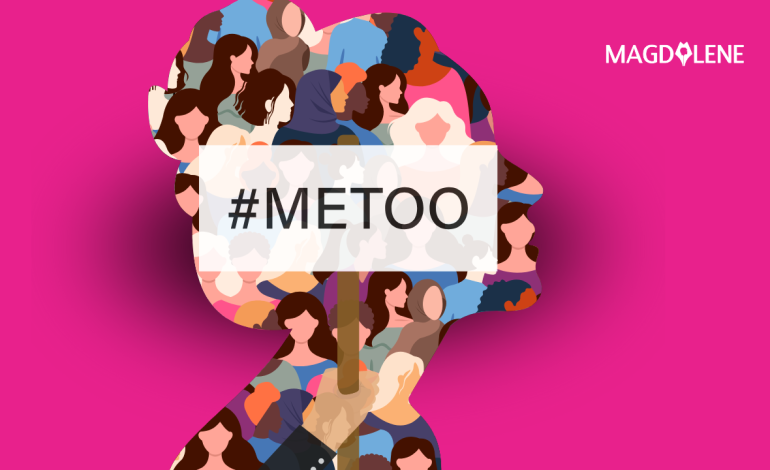Polluters Must Pay: How COP29 Can Make This A Reality

The 29th Conference of the Parties (COP29) takes place in Azerbaijan in November 2024. The annual climate change conference must focus on holding corporations and countries accountable for greenhouse gas emissions.
The “polluter pays” principle has been a key part of climate discussions for years. It says a polluter should bear the costs of managing its pollution, to prevent damage to human health and the environment.
Although the principle is widely accepted in theory, it hasn’t been put into practice consistently, or enforced. Many of the largest polluters continue to operate with little or no financial consequence for the damage they cause.
Many countries, especially developing ones, have been left to bear the costs of climate adaptation and mitigation, despite being the least responsible for global emissions.
COP29 will have to show more political will and commitment to achieve the drastic emission reductions needed to limit global warming. The stakes have never been higher. The world is heating up rapidly. On 17 November 2023, the global temperature exceeded 2°C above pre-industrial levels for the first time ever in modern recorded history.
Failing to stop all greenhouse gas emissions by 2050 could cost the African continent US$50 billion annually. It is also expected to cause some 250,000 deaths a year globally between 2030 and 2050. Africa would be badly affected.
From my perspective as a professor of environmental science who has researched fossil fuel pollution and its impact on communities in South Africa, I believe that COP29 could robustly advance measures that hold polluters responsible for their emissions.
Taxing polluters, making polluters pay for past pollution, and creating space for courts to award climate damages are some measures COP29 should agree to.
Also read: Fast Fashion Still Comes With Deadly Risks, 10 Years After the Rana Plaza Disaster
The Problem with Previous COPs
Earlier COPs have set ambitious climate goals. Attending COP17 in Durban, South Africa in 2011, I observed how this meeting resulted in the setting up of a working group on the Durban Platform for Enhanced Action. The group developed a plan and actions for mitigation efforts by all countries that attended the conference.
That was not enough to secure immediate, drastic and unprecedented annual emission reductions at the source from major polluters. Greenhouse gas emissions continued.
The legally binding Paris Agreement 2015, adopted at COP21, set more ambitious climate goals: 196 countries agreed to limit global warming to well below 2°C.
But the signatory countries only need to make voluntary commitments (Nationally Determined Contributions) to reduce emissions. They can choose to not meet these commitments without facing penalties.
Many have fallen short on their promises. For example, the United States – the major emitter of greenhouse gases globally – withdrew from the Paris Agreement in 2017, citing economic harm. But it faced no penalties or sanctions for leaving.
Also read: An Academic Looking Glass into Indonesian Contemporary Fashion
Measures to Strengthen the ‘Polluter Pays’ Principle
COP29 presents another opportunity, possibly the last, to hold corporations and countries responsible for their emissions. This is a crucial step towards achieving climate justice and reducing temperature rises. COP29 must introduce enforceable penalties for major polluters that fail to meet their emissions targets. These could include:
Ending fossil fuel subsidies
Climate accountability is about ensuring that those who have polluted heavily are held responsible for their actions. The top 20 fossil fuel companies have been responsible for 35% of global emissions since 1965. Globally, fossil fuel subsidies were US$7 trillion in 2022, compared to US$4.5 trillion in 2015. These subsidies encouraged continued greenhouse gas emissions by the fossil fuel industry, and should be ended.
Mandatory climate finance liability mechanisms
COP29 should push for a global climate liability framework. This would make it compulsory for corporations responsible for large-scale emissions to compensate affected regions. Models to follow are the liability schemes for oil spills or other environmental disasters, where companies are obliged to pay for clean-up costs and damages.
Major polluters should contribute to a global fund for climate damages. This could finance climate adaptation and mitigation and loss and damage initiatives.
Carbon pricing and taxation for emissions at source
Carbon pricing calculates the public cost of floods or drought caused by climate change damage. COP29 needs to expand it to reflect the true environmental and social costs of carbon emissions so polluters pay for this damage.
Carbon tax is when the government sets a tax that polluters must pay for every tonne of greenhouse gases they emit. This makes it more costly to pollute with incentive to adopt cleaner technology. For example, Sweden levies the highest carbon tax rate at €116.33 (US$137) per tonne of carbon emissions, and this has helped reduce greenhouse gas emissions.
However, I argue that cap-and-trade systems and emissions trading must be abandoned, since they have largely failed to sufficiently curb emissions and have allowed industries to continue with “business as usual”. In some instances cap-and-trade has made environmental injustices worse. For example, the Bisasar landfill site in Durban, South Africa (Africa’s largest dumpsite) has led to greater waste generation in order to generate methane for carbon credits.
Legal accountability for climate damage
COP29 should emphasise the role of the International Court of Justice and other international legal bodies in addressing cases of environmental harm and awarding climate-related damages. New international legal frameworks are needed. These should allow for climate-related lawsuits to be brought against governments, corporations and others responsible for excessive emissions. Past legal victories, such as the 2021 ruling by a Dutch Hague District court ordering Royal Dutch Shell to reduce its emissions by 45% by 2030, set a powerful precedent.
Financial transparency regulations
COP29 should call for stricter corporate financial disclosure laws. Expanded frameworks such as the Task Force on Climate-related Financial Disclosures could compel companies to report on environmental degradation, resource extraction, and emissions they cause. This transparency would help governments and international bodies identify polluters and enforce climate reparations more effectively.
Accountability for historical emissions
Fossil fuel companies, which have been largely unregulated for many years, should be held accountable for their past emissions. COP29 can create a mechanism to compel these companies to pay into a formal global “climate reparations” fund.
Also read: Rent-a-Dress: Sustainable Alternative for Your Sartorial Dilemma
Moving Forward at COP29
The international community must establish robust mechanisms that ensure accountability from major greenhouse gas emitters. This involves compelling financial contributions from high-emission nations and corporations. These will fund climate mitigation and adaptation efforts in vulnerable communities.
The success of COP29 will depend on the collective will of governments and corporations to embrace the principles of justice, equity and transparency. This will ensure that the burden of addressing climate change does not fall solely on the shoulders of those least responsible, such as countries in Africa.
Llewellyn Leonard, Professor of Environmental Science, University of South Africa
This article was first published on The Conversation, a global media resource that provides cutting edge ideas and people who know what they are talking about.
Ilustration by Karina Tungari






















